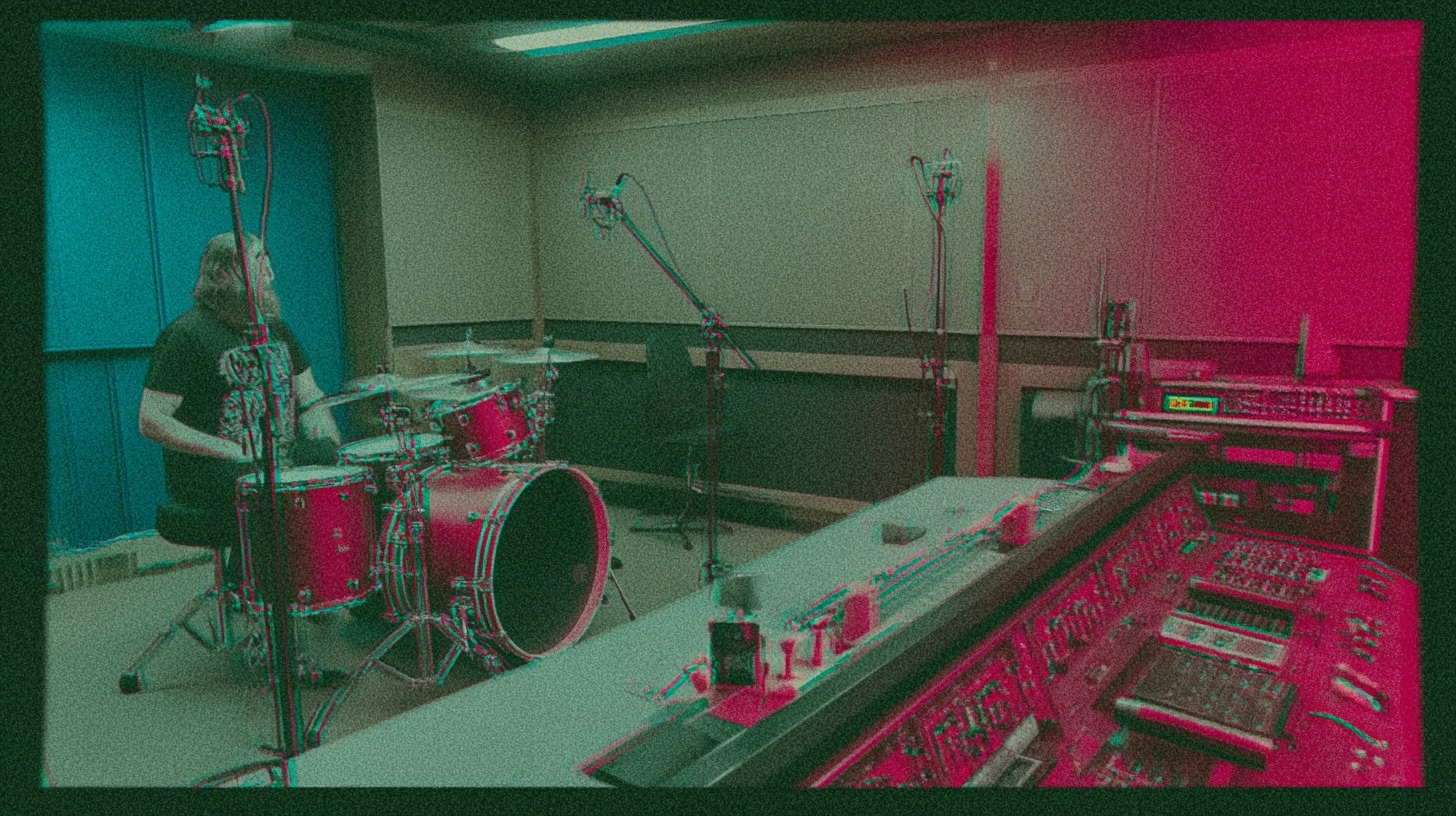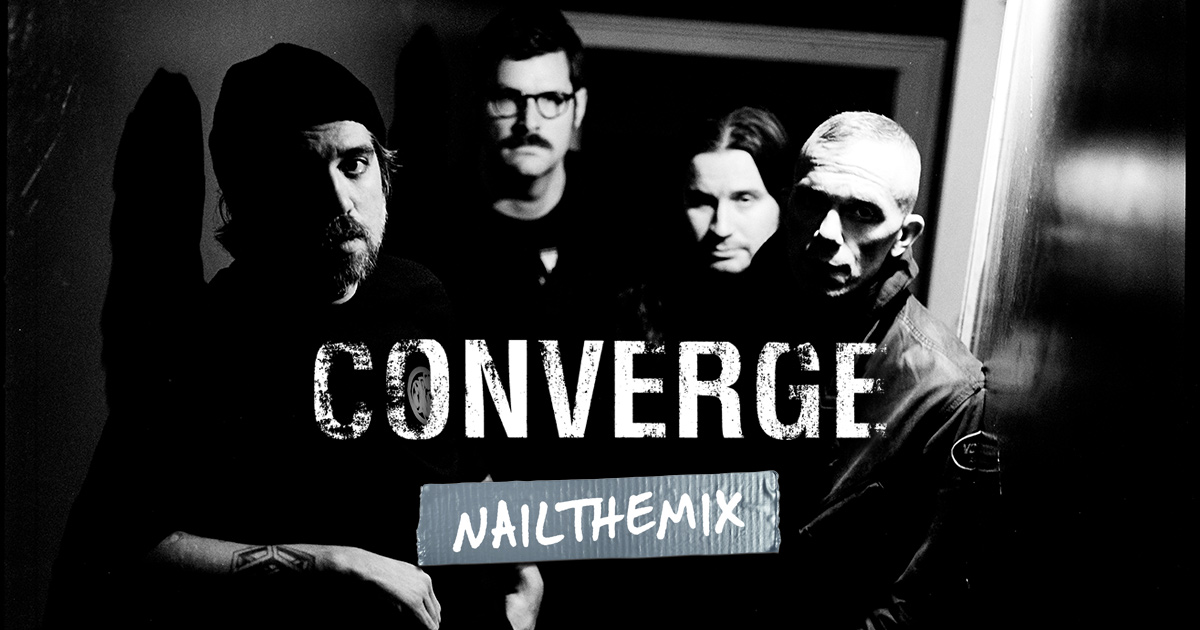
FM Synthesis in Metal: Crafting Aggressive Tones
Nail The Mix Staff
FM synthesis. Just hearing the term might conjure images of cheesy 80s electric pianos or those glassy bell sounds from vintage Yamaha DX7s. And yeah, it did that. But if that's all you think FM is good for, especially in metal, you're missing out on a seriously powerful tool for crafting some truly brutal and unique sounds in your productions. Forget delicate pads; we're talking about sounds that can rip, tear, and add a whole new layer of aggression to your tracks.
So, let's dive into how you can bend Frequency Modulation synthesis to your will and forge some seriously heavy textures.
Why Bother with FM Synthesis for Metal Anyway?
Good question. You’ve got your amp sims, your drum samples, maybe even some killer orchestral libraries. Why add another layer of complexity with FM?
Sheer Sonic Mayhem Potential: FM synthesis, at its core, is about one waveform (the modulator) messing with the pitch of another (the carrier). When you start stacking these "operators" (as they're often called) and tweaking their frequency ratios and levels, you can go from pure sine waves to harmonically rich, complex, and often downright nasty timbres very quickly. Think metallic shrieks, evolving drones, distorted bass growls, and percussive hits that sound like a cyborg smashing an anvil – stuff that’s hard to get with your standard subtractive synth.
Industrial Strength & Percussive Edge: Metal, especially modern and industrial-tinged subgenres, thrives on sharp, cutting sounds. FM excels at creating percussive elements with incredibly defined transients. Those glassy, bell-like attacks aren't just for pretty melodies; they can add a unique click or punch to a snare, a metallic layer to a kick, or become standalone industrial percussion elements that slice through the densest mix.
Endless Sound Design Playground: Unlike just slapping a distortion pedal on a saw wave, FM offers a deeper level of tonal sculpting before you even think about external processing. The relationships between operators, their envelopes, and feedback loops are where the real alchemy happens. You can create sounds that feel alive, shifting and morphing in ways that make your tracks stand out.
Your FM Arsenal: Key Synths & Plugins for Metal
While the original Yamaha DX7 hardware is iconic, thankfully we've got a ton of powerful software options that make FM synthesis way more accessible (and often, more versatile).
- Native Instruments FM8: This is a stone-cold classic for a reason. Its matrix for routing operators is super intuitive once you get the hang of it. You can easily create complex modulator/carrier chains. Plus, it has features like operator self-modulation (feedback) which is instant chaos and distortion – perfect for metal.
- Arturia DX7 V: If you want that authentic 80s FM character as a starting point, Arturia’s emulation is fantastic. It nails the sound of the original but with a much friendlier interface and modern plugin conveniences. Don't let the "vintage" tag fool you; push it hard, and it'll scream.
- Xfer Records Serum: Yeah, Serum is the wavetable king, but its FM capabilities are no joke. You can easily FM one oscillator from another (FM from B, FM from Sub, etc.) and use its incredible warp modes to twist those FM'd sounds even further. The visual feedback is also a huge plus for understanding what's happening.
- Ableton Live's Operator: If you're an Ableton user, don't sleep on Operator. It's deceptively simple looking but incredibly powerful. It offers a fixed set of algorithms (pre-defined operator routings) which can be a great way to learn FM without getting overwhelmed by a full matrix. Plus, you can draw your own oscillator partials.
- Kilohearts Phase Plant: This modular beast lets you load up "FM" modules and connect things pretty much however you want. If you're into deep sound design and want to combine FM with other synthesis types, Phase Plant is a monster.
- Dexed: It's free, it's a Yamaha DX7 clone, and it can even load original DX7 patches. A great no-cost way to dip your toes in.
Forging Aggression: FM Sound Design Recipes for Metal
Alright, let's get practical. How do you actually make FM sound metal?
Industrial Impacts & Metallic Clangs
Think sounds that hit hard and have that cold, metallic sheen. Perfect for layering with drums or creating standalone industrial percussion.
- The Concept: Use a simple carrier (sine wave often works best) and modulate it with another operator (also often a sine) that has a higher frequency ratio and a fast, percussive envelope.
- In Practice (e.g., using FM8 or Operator):
- Operator 1 (Carrier): Sine wave, standard pitch (Ratio 1.000). Envelope: sustain full, quick release.
- Operator 2 (Modulator): Sine wave. Route this to modulate Operator 1.
- Ratio: Experiment with higher, often non-integer ratios like 3.570, 7.120, or even higher for more complex, inharmonic clangs. Integer ratios (2.000, 3.000, 4.000) will give you more harmonic, bell-like tones.
- Envelope: Very fast attack, quick decay, no sustain, quick release. This makes the metallic "hit" sharp.
- Level: This is crucial. Higher modulator levels (the amount it affects the carrier) create more harmonics and a more intense metallic sound.
- Pro Tip: Add a tiny bit of pitch envelope to the modulator – a quick upward or downward blip at the start can enhance the impact. Try sending the output of this through a bitcrusher like Decimort 2 or a dirty amp sim.
Distorted Basslines & Growls from the Depths
FM is fantastic for creating bass sounds that have movement, grit, and can evolve over time – perfect for those filthy drops or underpinning a heavy riff. While techniques like splitting a DI are common for achieving a clanky metal bass tone, FM offers a way to build one from pure synthesis.
- The Concept: Use multiple operators, potentially with feedback on one of them to generate internal distortion. Modulate the carrier's pitch slightly with an LFO for movement.
- In Practice (e.g., using Serum's FM from B or FM8's feedback):
- Operator A (Carrier in Serum) / Operator 1 (Carrier in FM8): Start with a sine or triangle wave.
- Operator B (Modulator in Serum) / Operator 2 (Modulator in FM8): Sine wave often works. Set its level to modulate Operator A/1.
- Ratio: For bass, try ratios like 0.500, 1.000, or 1.500 on the modulator relative to the carrier for focused low-end.
- Feedback (FM8/Operator): If your synth allows it, route an operator to modulate itself. Even a small amount of feedback can quickly add distortion and complex harmonics. In FM8, you can click and drag an operator's output box onto its own input.
- Serum FM from B: Set Osc B to FM (from A). Now Osc B's pitch and shape will drastically alter Osc A. Play with Osc B's coarse pitch and wavetable position.
- LFO Modulation: Assign an LFO to subtly modulate the pitch of the main carrier (or even a modulator) for a slow, evolving growl. Or, modulate the level of a key modulator with an LFO to create rhythmic pulsing in the timbre.
- Settings Example (FM8):
- Op1 (Carrier, Sine, Ratio 1.000)
- Op2 (Modulates Op1, Sine, Ratio 2.000, high level, quick attack/decay envelope)
- Op3 (Modulates Op1, Sine, Ratio 0.503 for slight detuned thickness, medium level, also feeds back into itself slightly for grit)
Eerie Pads & Drones of Despair
Want to create some unsettling atmosphere or a foundation of pure dread? FM can deliver.
- The Concept: Slow attacks on operators, complex (often inharmonic) modulator ratios, and subtle LFO movements are key.
- In Practice (e.g., using Arturia DX7 V or FM8):
- Envelopes: Use slow attack times (several seconds) on both carrier and modulator operators. This creates sounds that fade in ominously.
- Ratios: Experiment with non-integer ratios between modulators and carriers (e.g., Modulator at 1.000, Carrier at 0.237, another Modulator at 3.451). This generates inharmonic content that sounds less "musical" and more textural.
- Modulator Levels: Keep modulator levels relatively low to moderate at first, then automate them slowly to make the sound evolve and become more intense over time.
- LFOs: Use very slow LFOs to modulate operator levels, panning, or fine-tuning of operators for constant, subtle movement.
Screaming Leads & FX Mayhem
Need a synth lead that cuts like a knife or some chaotic FX risers and hits? FM can get wild.
- The Concept: High modulator indices (modulator output levels) are your friend here for aggressive, harmonically rich tones. Pitch envelopes add movement.
- In Practice (e.g., using any capable FM synth):
- High Modulator Levels: Crank the level of your main modulating operator(s). This is where FM really starts to scream and produce dense, often noisy, harmonics.
- Pitch Envelopes: Apply a pitch envelope to your carrier operator for divebombs or sweeps. Or, apply a fast pitch envelope to a modulator – this can create laser-like zaps or ripping sounds.
- Waveforms (if available): If your FM synth lets you use waveforms other than sines for operators (like Serum or Phase Plant), try using saw or square waves as modulators or even carriers. This can instantly add more aggression.
- Feedback: Again, introduce feedback on an operator for instant distorted chaos.
Processing Your FM Nightmares for Maximum Impact
Raw FM sounds can be cool, but just like guitars or drums, they often need processing to sit right in a metal mix and achieve their full potential.
Distortion & Saturation: More is More (Sometimes)
FM sounds, especially the cleaner, more metallic ones, take distortion like a champ.
- Plugins: FabFilter Saturn 2 is incredible for nuanced saturation and distortion. Soundtoys Decapitator brings the analog-style filth. Even simple stuff like the Softube Saturation Knob can work wonders. Don't be afraid to run your FM sounds through guitar amp sims like those from Neural DSP or STL Tones – a high-gain amp on a metallic FM clang can sound immense.
- Tip: Often, it's best to get the core timbre right with FM, then use distortion to enhance it and add aggression, rather than trying to make a bland FM sound aggressive only with distortion.
EQing FM in a Dense Metal Mix
FM sounds can be harmonically very rich, which means they can easily occupy a huge chunk of the frequency spectrum. You'll need to EQ them to play nice.
- Carve Space: Identify the key frequencies of your FM sound and decide where it needs to live. Does it need to be a sub-bass rumble? A mid-range growl? A high-frequency sizzle? Cut out what you don't need to make room for guitars, vocals, and snare.
- Enhance Character: For metallic clangs, a boost in the upper mids (2-5kHz) or highs (8kHz+) can bring out the "metal" sound. For basses, ensure the fundamental is strong.
- Tame Harshness: FM can sometimes get very peaky or "digital" sounding, especially with high modulator levels. Use a surgical EQ (like FabFilter Pro-Q 3) with a narrow Q to find and notch out any piercing or unpleasant resonant frequencies.
- To nail the fundamentals, it helps to understand what EQ is and how to wield it to carve out space and add aggression in a dense mix.
Compression: Punch, Control, and Vibe
Compression can help control the dynamics of your FM sounds, add punch, or even bring out subtle details in evolving textures.
- Percussive FM: For those industrial hits or layered snare sounds, a fast FET-style compressor (think an 1176 like Arturia's Comp FET-76 or Slate Digital's FG-Stress) can add serious smack.
- Bass & Drones: For FM basses, compression can even out the level and add sustain. For evolving pads or drones, slow attack and release times can help bring up the low-level details and movement without crushing the sound.
- Diving into the different types of audio compressors (like VCA vs. FET) will give you a bigger sonic palette to work with.

100+ Insanely Detailed Mixing Tutorials
We leave absolutely nothing out, showing you every single step
Modulation & Spatial Effects: Adding Depth and Movement
Chorus, phasers, flangers, delays, and reverbs can take your FM sounds to another dimension.
- Modulation FX: A slow phaser (like Soundtoys PhaseMistress) or a subtle chorus on an FM pad can enhance its evolving quality.
- Reverb & Delay: Big, dark reverbs (Valhalla VintageVerb or Supermassive are great) can turn simple FM hits into cavernous impacts. Ping-pong delays or heavily filtered delays can create rhythmic complexity. Eventide's H3000 Factory plugin is a goldmine for wilder pitch-shifted delays and unique spatial effects.
Weaving FM into Your Metal Tapestry
So, how do you actually use these sounds in a track?
- Layering: This is a big one. Layer a subby FM bass underneath your DI bass guitar for massive low-end. Add a metallic FM transient on top of your snare sample for extra cut and industrial flavor. Blend a subtle, eerie FM drone under a heavy guitar riff to add an unsettling atmosphere.
- Transitional FX: FM is perfect for creating custom risers, downshifters, sci-fi zaps, and other sound effects to glue sections of your song together. These kinds of post-production FX add ear candy and professional polish.
- Lead Instrument: In genres like industrial metal, cyber metal, or some forms of djent, an aggressive FM synth can absolutely take center stage as a lead instrument or provide the main rhythmic chug.
- Textural Beds: Use complex, evolving FM pads or drones low in the mix to create a sense of unease or a specific sonic environment. Properly mixing synths in a dense arrangement is key to making this work without creating mud.
Beyond the Presets: FM Is What You Make It
FM synthesis might seem intimidating at first, but hopefully, you can see its massive potential for creating unique and aggressive sounds that can really elevate your metal productions. Don't just stick to subtractive synths and samples. Dive into those operators, ratios, and envelopes, and start experimenting. You might be surprised at the brutal sonic weapons you can forge.
Learning the 'how' of FM synthesis is one thing, but seeing how these kinds of unique sounds are integrated into a pro metal mix, alongside crushing guitars and thundering drums, is where the real magic happens. If you're ready to see how world-class producers tackle these challenges and build massive metal mixes from the ground up, check out Nail The Mix. We give you the multitracks from bands like Spiritbox, Motionless In White, and Architects, and show you every step as the original producers mix them from scratch. Find out more and unlock your sound mixing modern metal beyond presets.
Get a new set of multi-tracks every month from a world-class artist, a livestream with the producer who mixed it, 100+ tutorials, our exclusive plugins and more
Get Started for $1





